Iran army inducts new drones, upgrades older UAVs
According to Radio Farda (Iran), a large number of new combat and reconnaissance drones were delivered to the Iranian army on Sunday, April 19, and IRGC-linked news agency Tasnim presented details about each model on April 21.
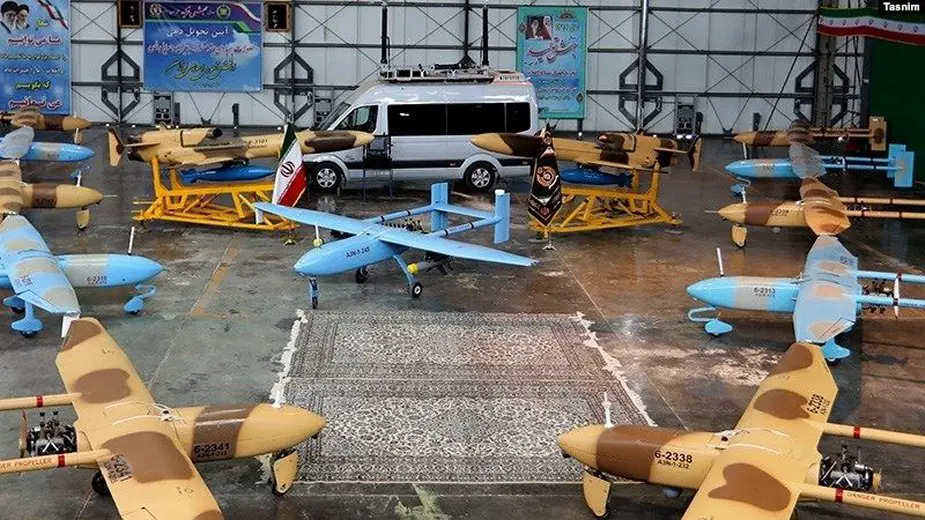
Ababil-3 and Atlas drones on display (Picture source: Tasnim)
The UAVs [Unmanned Aerial Vehicles] are to be used by the Air Force and Air Defense Units of Iran's conventional army, the report said. Iran has introduced these high-cost drones while it has been complaining about the adverse impact of US sanctions on its economy.
According to Tasnim, the drones include new generations of Atlas and Ababil drones, adding that the two models Ababil-3 and Karrar had been showcased previously.
Last week, General Kiumars Heydari, the Commander of the Ground Force of the Army, said on the occasion of the Army Day (April 17) that the new weapons are going to be issued to army units. As far as his own units at the ground forces were concerned, Heydari said that the aging German-made G-3 assault rifle was going to be replaced with a kind of MP-5 and the T-90 main battle tanks will be inducted in the ground force's armored units.
Another commander broke the news about new drones that can reach Israel but did not elaborate on the type of UAV, its fuel, guiding and navigation system and other specifications.
The drones presented in the presence of the Minister of Defense and Army commanders were the Ababil-3, Karrar, Atlas, and Naseh models. According to Western observers, Islamic Republic sources often exaggerate the capabilities of these systems.
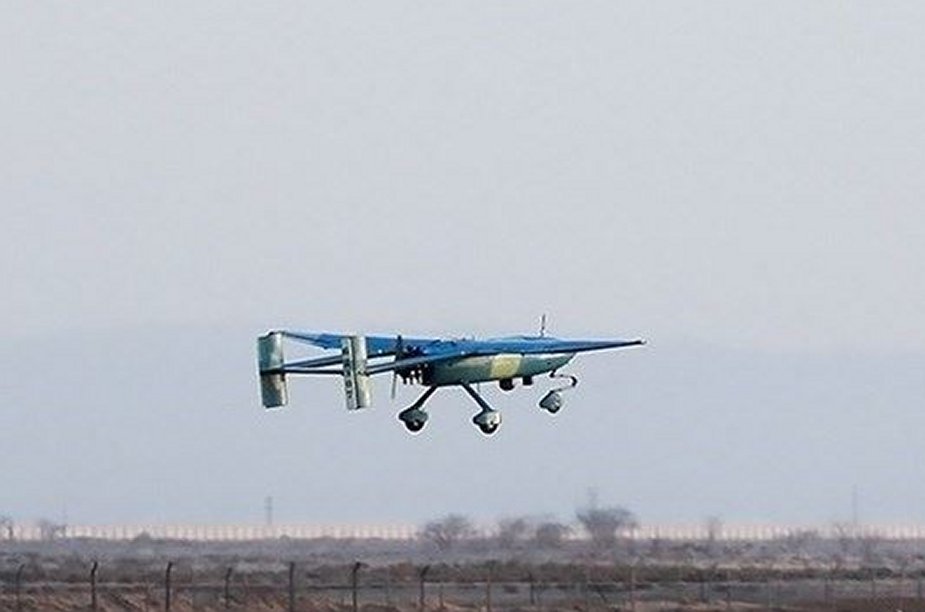
Ababil-3 (Picture source: Tasnim)
Ababil-3
Although Ababil-3 was officially first delivered to the Iranian armed forces in November 2014, it has been part of the Iranian army's arsenal since May 2010 when pictures of it were first published during a military exercise over the Persian Gulf simulating a reconnaissance mission to check out vessels sailing in the Gulf. Ababil-3 was also observed in several other military exercises between 2010 and 2014. It can fly up to 8 hours and can transmit pictures to its base or to any other platform within a range of 250 km from its base. Initially a reconnaissance UAV with two revolving cameras, Ababil-3 is now armed with Ghaem bombs to convert it into a combat drone.
It is gasoline-fuelled, has a composite body and can fly up to an altitude of 15 thousand feet. According to Tasnim, this drone has been in use "at the resistance front" which could mean, Iraq, Syria, Southern Lebanon, Yemen and possibly elsewhere.
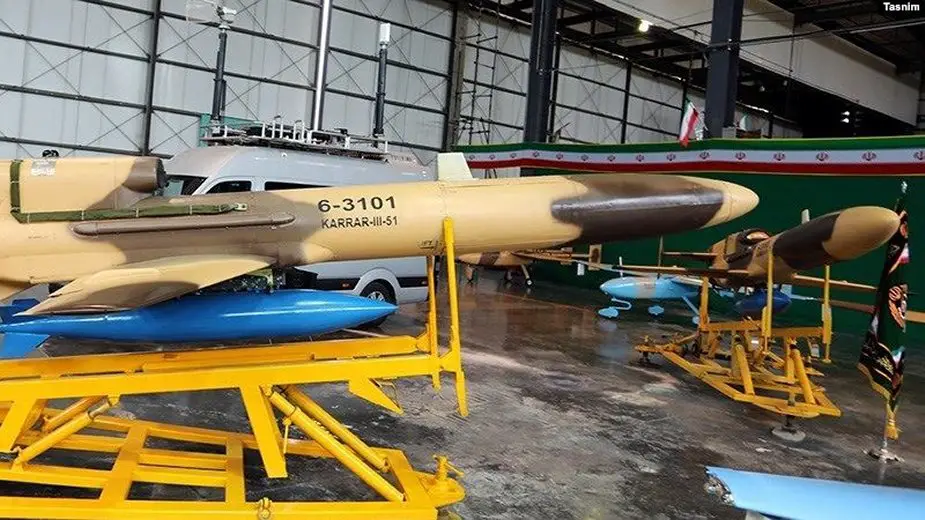
Karrar-III-51 drone (Picture source: Tasnim)
Karrar
This is the first Iranian-made drone flying with a turbojet engine. Karrar was first showcased in 2010. It carries 500 Kg of fuel, has a range of 1,000 km and can fly at up to 900 Km/h. It can be re-programmed in mid-air and can shut off enemy jamming devices. Depending on the mission it can fly in an altitude between 25,000 to 40,000 feet. It can fire anti-vessel Korsar cruise missiles to target vessels within 25 kilometers.
Karrar has been used in reconnaissance and interception missions and boasts a very efficient navigation system.
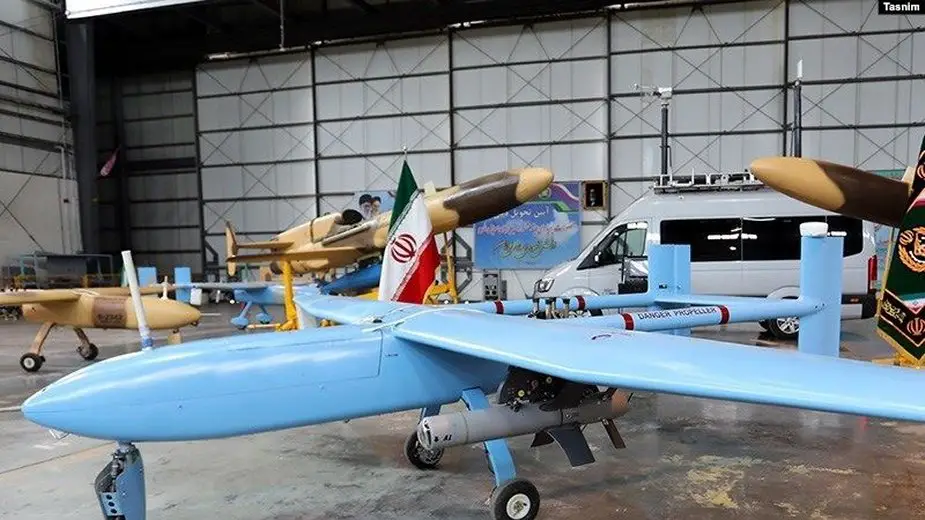
Atlas drone (Picture source: Tasnim)
Atlas
Atlas is a new, upgraded version of Ababil-3. Its main structure is similar to Ababil-3 but improvements have been made in some of its functions including its landing mechanism. The front wheel has a hydraulic system and improvements have been made in the rear wheels and axis to make take-off and landing smoother.
Atlas can carry Ghaem bombs. Its wings and body have been reinforced to make it capable of carrying at least two bombs. The biggest advantage of Atlas to older models is its auto take-off and landing system involving a laser sensor underneath the body which makes it capable of landing and taking off without assistance from a pilot. With this system, the UAV can change the landing area if the situation in the pre-planned area is not ideal for landing.
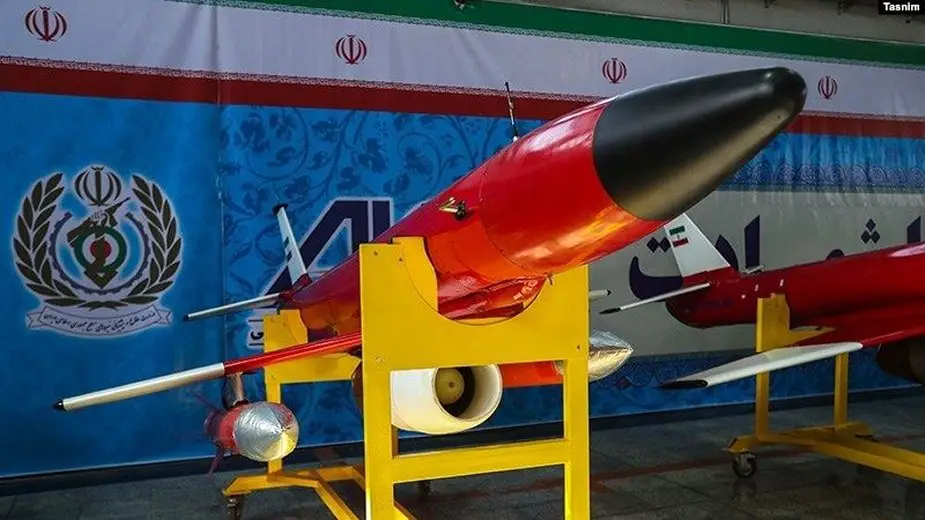
Naseh drone (Picture source: Tasnim)
Naseh
This is another jet-engine drone with a turbojet engine made by the Qods Defense Industries. It is mainly used for training or for misleading enemy radars. Its engine is the same model used in Karrar drones and Noor cruise missiles. Atlas is made based on the U.S. drone Beechcraft MQM-107 Streaker. It can fly for less than an hour with a speed of 0.7 Mach. It lands with a parachute at the end of its mission. Its low-wings system gives it high maneuverability at high speed. Therefore, air defense personnel use it while being trained to work on the defense system to create the test and training situation similar to real situations.
Atlas does not carry bombs. However, it carries payloads that are used for other purposes including the ones that are dropped, so that the air defense system can deal with them as bombs and missiles. In September 2017, a similar drone was seen during a military exercise while carrying 4 Misagh-1 missiles.


























